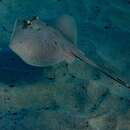en
names in breadcrumbs


The painted maskray (Neotrygon leylandi) or brown-reticulate stingray, is a species of stingray in the family Dasyatidae. It is found in Australia, Indonesia and Papua New Guinea. Its natural habitats are shallow seas, subtidal aquatic beds, and coral reefs.
The painted maskray (Neotrygon leylandi) or brown-reticulate stingray, is a species of stingray in the family Dasyatidae. It is found in Australia, Indonesia and Papua New Guinea. Its natural habitats are shallow seas, subtidal aquatic beds, and coral reefs.